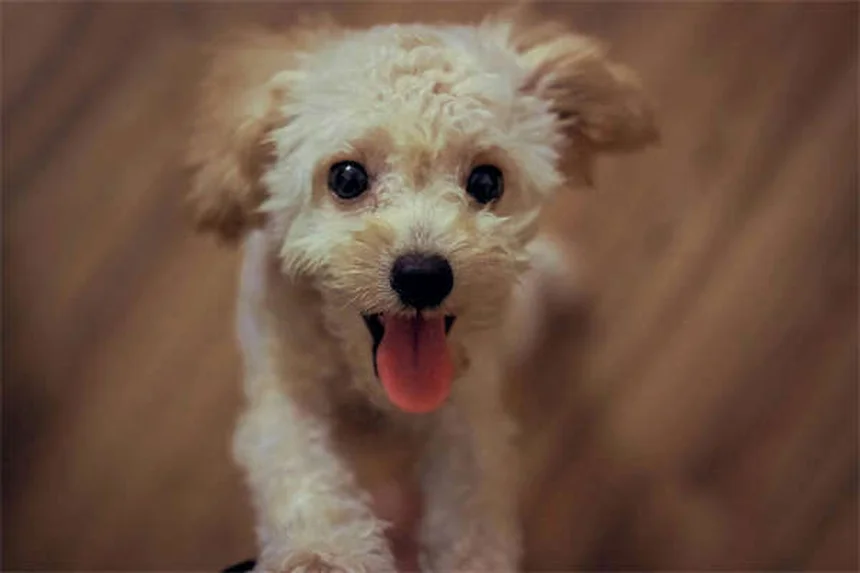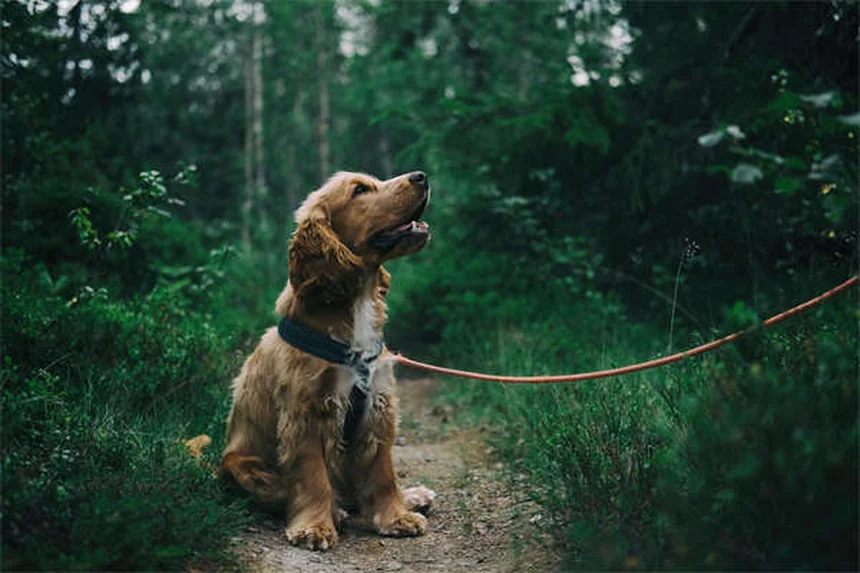How can you determine your dog's perfect weight? The answer is simple: stop relying on generic weight charts and start using the Body Condition Score (BCS) method! Veterinary researchers have proven that combining your dog's current weight with their BCS gives the most accurate picture of their ideal weight. I've been using this method with my own dogs for years, and let me tell you - it's a game changer!Here's why this matters to you: that number on the scale doesn't tell the whole story. A 50-pound Labrador could be obese while a 50-pound Great Dane might be underweight. That's why we use both the hands-on BCS evaluation and a simple calculation developed by top veterinary nutritionists. In just a few minutes, you'll know exactly what your pup should weigh for optimal health.
E.g. :How to Introduce a Cat to a Dog: 5 Stress-Free Steps That Work
Advertisement
- 1、Understanding Your Dog's Weight Journey
- 2、Becoming a BCS Detective
- 3、Calculating Your Dog's Perfect Weight
- 4、The Life-Changing Power of Proper Weight
- 5、Creating Your Dog's Weight Plan
- 6、Monitoring Progress Like a Pro
- 7、Troubleshooting Weight Challenges
- 8、Final Thoughts on Canine Weight
- 9、Beyond the Scale: Understanding Your Dog's Nutritional Needs
- 10、The Science Behind Canine Metabolism
- 11、Creative Exercise Solutions for Busy Owners
- 12、Common Weight Loss Myths Debunked
- 13、Weight Loss Success Stories
- 14、Maintaining Weight Long-Term
- 15、FAQs
Understanding Your Dog's Weight Journey
The Smart Way to Measure Fido's Fitness
Forget those generic weight charts you see online - they're about as useful as a chocolate teapot! Veterinary researchers have cracked the code on determining your pup's perfect weight. They've discovered that combining body weight with body condition scoring gives the most accurate picture of your dog's health.
Think of it like this: would you judge a book by its cover alone? Of course not! Similarly, we shouldn't judge a dog's health by the scale alone. That's why we use both numbers and physical evaluation to get the full story. This dual approach helps us account for different breeds, body types, and individual variations that simple weight ranges can't capture.
Body Condition Scoring: Your Hands-On Guide
Here's where things get interesting! The Body Condition Score (BCS) is like your dog's personal fitness report card. We use a 9-point scale where:
- 1-3: "Skin and bones" - needs more groceries
- 4-5: "Just right" - Goldilocks would approve
- 6-7: "Pleasantly plump" - time to cut back on treats
- 8-9: "Oh lawd he comin'" - serious diet needed
Did you know some dogs can actually score above 9? That's when we're talking about morbid obesity, and it's no laughing matter - though your chonky boy might look adorable wobbling around.
Becoming a BCS Detective
 Photos provided by pixabay
Photos provided by pixabay
The Rib Test: More Than Just Belly Rubs
Here's how you play doggy detective: run your hands along your pup's sides. You should be able to feel ribs with just a light covering of fat - like tracing your fingers over a washboard covered with a thin blanket. If you're pushing through marshmallow fluff to find them, we've got work to do!
From above, your dog should have a visible waist - think of an hourglass figure, not a sausage shape. From the side, there should be a gentle upward tuck behind the ribs. No tuck? Your dog might be storing enough energy for winter hibernation!
Spotting Weight Extremes
Underweight dogs look like furry skeletons - you'll see obvious ribs, spine, and hip bones poking out. On the flip side, overweight pups have:
| Feature | Underweight | Ideal | Overweight |
|---|---|---|---|
| Ribs | Visible, no fat | Easily felt | Buried under fat |
| Waist | Extreme tuck | Gentle curve | Nonexistent |
| Belly | Severe tuck | Moderate tuck | Sags downward |
Calculating Your Dog's Perfect Weight
The Magic Formula (No Wands Required)
Researchers at the University of Liverpool and Royal Canin developed this nifty calculation. Let's break it down with our 50-pound, BCS 9 example:
- Start with BCS: 9
- Subtract 5: 9 - 5 = 4
- Multiply by 10: 4 × 10 = 40
- Add 100: 40 + 100 = 140
- Divide 100 by result: 100 ÷ 140 ≈ 0.714
- Multiply by current weight: 0.714 × 50 = 35.7 lbs
Voilà! Our chunky 50-pounder should ideally weigh about 35.7 pounds. That's nearly 15 pounds to lose - but don't worry, we'll get there!
 Photos provided by pixabay
Photos provided by pixabay
The Rib Test: More Than Just Belly Rubs
Ever wonder why we can't just pick a number out of thin air? Because every dog's weight loss journey is unique! This formula accounts for how much excess weight your dog is carrying, creating a personalized target rather than a generic range.
Here's a fun fact: if that same 50-pound dog had a BCS of 7 instead of 9, their ideal weight would be about 41.7 pounds. See how dramatically the score affects the target? That's why we can't rely on weight alone!
The Life-Changing Power of Proper Weight
Overweight Dogs: More Than Just Looks
Carrying extra pounds isn't just about aesthetics - it's like making your dog wear a heavy backpack 24/7! Overweight dogs face:
- Joint pain and arthritis
- Breathing difficulties
- Increased surgical risks
- Shorter lifespans (up to 2.5 years less!)
But here's the good news: losing just 6-8% of body weight can significantly improve mobility in arthritic dogs. That's like our 50-pound dog feeling better after losing just 3-4 pounds!
The Underweight Mystery
Now, what if your dog scores too low? Unexpected weight loss can signal:
- Dental issues (ouch!)
- Parasites (unwelcome guests)
- Chronic diseases
- Digestive problems
Did you know stress alone can cause weight loss in dogs? That's right - even emotional factors can tip the scales. That's why we always investigate when a dog's ribs start showing unexpectedly.
Creating Your Dog's Weight Plan
 Photos provided by pixabay
Photos provided by pixabay
The Rib Test: More Than Just Belly Rubs
Your vet is your partner in this journey! Together, you'll:
- Set realistic goals (no crash diets!)
- Calculate precise calorie needs
- Schedule regular check-ins
- Adjust as needed
Remember our 50-pound dog needing to reach 35.7 pounds? We'd aim for about 1-2% weight loss per week. That's roughly 0.5 pounds weekly - slow and steady wins the race!
Exercise: The Fun Part!
Weight management isn't just about food - it's about movement too! Try:
- Swimming (easy on joints)
- Puzzle toys (mental + physical)
- Short, frequent walks
- Play sessions
Pro tip: Ten minutes of play can burn as many calories as a thirty-minute walk for some dogs. Find what your pup loves - maybe it's fetch, or perhaps flirt pole chasing!
Monitoring Progress Like a Pro
The Monthly Check-In
Regular weigh-ins are crucial - but don't obsess over daily fluctuations! We recommend:
- Monthly vet visits
- Weekly at-home BCS checks
- Progress photos (great for motivation!)
Did you know you can use a regular bathroom scale for small dogs? Just weigh yourself holding them, then weigh yourself alone, and subtract! For bigger dogs, many vet offices offer free weigh-ins.
When to Celebrate
Every pound lost deserves recognition! But the real victory comes when:
- BCS reaches 4-5
- Energy levels improve
- Your vet gives the thumbs-up
Remember our 50-pound dog? When they hit that 35.7-pound target, it's time for celebration (with non-food rewards, of course)! Maybe a new toy or extra cuddle time.
Troubleshooting Weight Challenges
The Plateau Problem
Hit a weight loss stall? Don't panic! This happens when:
- Metabolism adjusts
- Muscle replaces fat
- Calorie needs decrease
Time to revisit your vet for plan adjustments. Maybe we tweak the food, increase exercise, or run some tests. The solution is out there!
Special Cases
Some dogs need extra consideration:
| Situation | Challenge | Solution |
|---|---|---|
| Senior Dogs | Lower mobility | Water therapy, joint supplements |
| Disabled Dogs | Exercise limitations | Custom physical therapy |
| Multi-Dog Homes | Food stealing | Separate feeding areas |
See? There's always a way forward. Your vet can help navigate these special circumstances.
Final Thoughts on Canine Weight
The Big Picture
Managing your dog's weight isn't about perfection - it's about progress. Even small improvements make a huge difference in quality and quantity of life!
Did you know that keeping your dog at an ideal weight could save you up to $2,500 in vet bills over their lifetime? Now that's what I call a good investment!
Your Next Steps
Ready to start? Here's your action plan:
- Do a BCS evaluation tonight
- Schedule a vet consultation
- Take "before" photos
- Pick one small change to implement today
Remember, every journey begins with a single step - or in this case, a single paw forward! Your dog is counting on you, and trust me, they'll thank you with more energy, better health, and extra tail wags.
Beyond the Scale: Understanding Your Dog's Nutritional Needs
The Hidden Factors Affecting Canine Weight
You might be surprised to learn that your dog's weight isn't just about food and exercise. Environmental factors play a huge role too! Things like:
- Your work schedule (do you leave treats out of guilt?)
- Neighborhood walkability
- Seasonal changes (less activity in winter)
- Other pets in the household
Ever notice how your dog gains weight when you're stressed? That's because we often unconsciously overfeed when we're distracted or emotional. Your pup becomes an innocent bystander in your stress-eating habits!
The Emotional Eating Connection
Dogs don't emotionally eat like humans do - but we humans emotionally feed them! That "just one more treat" often comes from:
| Situation | Human Emotion | Better Alternative |
|---|---|---|
| Leaving for work | Guilt | Special toy instead |
| Dog looks sad | Sympathy | Extra playtime |
| Celebration | Joy | New chew bone |
See the pattern? We're projecting our own emotional relationships with food onto our dogs. The solution? Find non-food ways to show love!
The Science Behind Canine Metabolism
Why Some Dogs Can Eat Anything
Ever met that one dog who eats like a horse but stays skinny? While others balloon up just looking at food? Here's why:
- Breed genetics (some are prone to weight gain)
- Spay/neuter status (altered dogs burn fewer calories)
- Age (metabolism slows about 5% per year after age 2)
- Gut microbiome (those beneficial bacteria matter!)
Did you know researchers are now studying fecal transplants to help obese dogs? Sounds gross, but it might be the future of canine weight management!
The Truth About "Light" Dog Foods
Not all diet foods are created equal. Some "light" formulas simply replace fat with carbs - which can actually make weight loss harder! Look for:
- Higher protein content (keeps them fuller longer)
- Added L-carnitine (helps burn fat)
- Fiber sources (for digestive health)
- Controlled calories (obviously!)
Here's a pro tip: compare the calories per cup between regular and light formulas. Sometimes the difference is shockingly small!
Creative Exercise Solutions for Busy Owners
Making Every Minute Count
Don't have hours for dog walks? Try these time-efficient activities:
- Stair sprints (great for high-energy dogs)
- Hide-and-seek with treats (mental + physical)
- Treadmill training (yes, dogs can learn!)
- Doggy playdates (socialization bonus)
Did you know that just 15 minutes of intense play can be better than an hour-long walk for some dogs? It's about quality, not just quantity!
The Power of Mental Stimulation
A tired dog is a happy dog - and mental exercise tires them out too! Try:
| Activity | Calories Burned | Time Required |
|---|---|---|
| Food puzzle | Similar to short walk | 15-20 minutes |
| Training session | Moderate | 10 minutes |
| Nose work | High | 20 minutes |
See how you can fit effective exercise into even the busiest schedule? Your dog doesn't care how long it takes - just that you're doing it together!
Common Weight Loss Myths Debunked
"My Dog is Just Big-Boned"
Sound familiar? While some breeds are naturally stockier, true "big bones" are rare. Here's how to tell:
- Can you feel ribs without pressing hard?
- Is there a visible waist from above?
- Does the belly tuck up?
If you answered no to these, your dog might be carrying extra padding, not extra bone structure. But don't worry - we can fix that!
"Free Feeding is More Natural"
This one's tricky! While wolves might graze throughout the day, our domestic dogs have different needs because:
- They're less active than wild canines
- Modern food is more calorie-dense
- We've bred many dogs to be food-motivated
Think about it - would you leave a pizza box open on your coffee table all day? That's essentially what free feeding is for many dogs!
Weight Loss Success Stories
Real Dogs, Real Transformations
Meet Bailey, a Labrador who lost 20 pounds (that's like a human losing 50!). His secret?
- Switched to measured meals
- Added green beans as low-cal snacks
- Started swimming twice weekly
- Used puzzle feeders
Within 8 months, Bailey went from struggling to walk to running like a puppy again. His arthritis pain decreased dramatically too!
The Ripple Effect of Weight Loss
When dogs lose weight, the benefits go way beyond looks:
- Better sleep (for both of you!)
- Improved mood (less grumpy)
- Fewer vet visits (cha-ching!)
- Longer lifespan (priceless)
Isn't it amazing how one positive change can create so many benefits? That's the power of proper weight management!
Maintaining Weight Long-Term
Making It a Lifestyle
The key to lasting success? Routine! Try these habits:
- Weekly weigh-ins (keep a log)
- Regular BCS checks
- Scheduled treat times (no grazing)
- Consistent exercise
Remember - this isn't a diet, it's a new way of living. And the best part? Once you establish these habits, they become second nature!
When to Adjust Your Approach
Life happens, and your dog's needs will change. Be ready to adapt when:
| Situation | Adjustment Needed |
|---|---|
| Season changes | More/less exercise |
| Aging | Different food formula |
| Medical issues | Vet-approved changes |
The most successful dog owners stay flexible while keeping the big picture in mind. You've got this!
E.g. :Dog Size Calculator | How big will my puppy get?
FAQs
Q: What exactly is a Body Condition Score for dogs?
A: The Body Condition Score (BCS) is like a report card for your dog's physique. We use a 9-point scale where 4-5 is ideal - think of it as the canine version of "just right." Here's how it breaks down: Dogs scoring 1-3 are too thin (you can easily see ribs and bones), 6-7 are overweight (ribs are hard to feel under fat), and 8-9 are obese (no waist visible, heavy fat deposits). I always tell my clients to think of it as grading your dog's body the way you'd judge a show dog - but with health as the priority rather than appearance.
Q: How do I actually measure my dog's Body Condition Score?
A: Becoming a BCS pro is easier than you think! Start by running your hands along your dog's ribs - you should feel them with light pressure, like tracing fingers over a washboard with a thin blanket. From above, look for an hourglass shape behind the ribs. From the side, there should be an upward belly tuck. If you're struggling, don't worry - it took me three tries to correctly score my first dog! Pro tip: take photos from different angles and compare them to BCS charts online or ask your vet for help.
Q: Why can't I just use breed weight standards to judge my dog's weight?
A: Great question! Breed standards are about as useful as a one-size-fits-all t-shirt - they might work for some, but most dogs fall outside the "average." Here's what I've learned from working with hundreds of dogs: two dogs of the same breed can have completely different healthy weights based on their frame size, muscle mass, and body type. That's why we love the BCS method - it accounts for your unique dog rather than comparing them to some theoretical ideal.
Q: My dog scored a 7 on the BCS scale - how much weight should they lose?
A: Let's do the math together! Say your dog weighs 60 pounds with a BCS of 7. Using the formula: (7-5=2, 2×10=20, 20+100=120, 100/120=0.833, 0.833×60=50). Your dog's target weight is about 50 pounds. But here's what I stress to all my clients: weight loss should be gradual - aim for 1-2% of body weight per week. For your dog, that's about 0.5-1 pound weekly. Slow and steady wins the race to better health!
Q: How often should I check my dog's Body Condition Score?
A: I recommend doing a quick BCS check every month - mark it on your calendar! For dogs on weight loss programs, I suggest weekly checks (same day each week) to track progress. Here's my personal routine: I check my dogs every "bath day" - that way I never forget. Remember, small changes are easier to correct than big ones, so regular monitoring is key. And don't forget to take progress photos - they're incredibly motivating when you hit plateaus!

